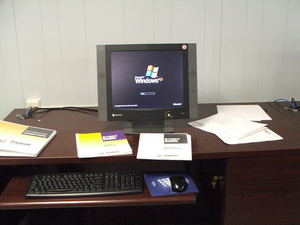The balance sheet shows you to network of your business at a specific point in time. Once you know the balance assets (what you own) in the balance of your liabilities (what and owe), begin to make the changes you need to increase the net worth of your company. The dollar amounts reporting on the balance sheet should be the total amount owned or owed, not the periodic amounts paid out or deposited in your monthly budget. The monthly budget, or the income and expense statement only track revenue and expenditures, and should be tracked on a different financial statement.
Assets (What You Own)
There are various categories of assets that we need to cover to better understand the balance sheet. These typically include: cash, investments, equipment, and property (real estate).
Cash Assets
These assets are cash or cash the government that you can access immediately on a short-term basis. They include checking or savings accounts, money market accounts, money market fund, CD, treasury bills, and it adds value of insurance policies.
Investment Assets
The assets can include but are not limited to, stocks, bonds, mutual funds, real estate investment trusts, precious metals, foreign currency and more.these assets are considered as investment because they can appreciate over time in about you to your next worth, which will show up on your balance sheet.
Equipment
These assets can include vehicles, copiers, printers, fax machines, smart boards, laptops, cell phones, furniture, and other similar items why your operate your business. The assets lose or their value or depreciate over time. As a result they will decrease the network stated on your balance sheet.
Property (Real Estate)
These assets include your commercial property (if any) where operate your business, and any other investment property that you use for the purpose of your business. Real estates is an asset that can and value in various ways. You can use it, rent it, lease a portion of the space inside of it, and sell it a conservative physical shelter, a tax shelter, and income producing investment, a net builder on your balance sheet, or a source of profit you sell it.
Liabilities (What You Owe)
Liabilities (debts) fall into two main categories: Current liabilities and long-term liabilities. Generally short-term liabilities are anything that must be paid off in one year or less. Long-term debts are those they can be paid off over longer periods of time greater than one year.
Current Liabilities
Current liabilities are considered short-term debts. They ain’t going credit cards, lines of credit, and property taxes. Although property taxes are automatically paid out of the escrow you build you when you make your monthly mortgage payments, it is still important to keep track of the amount owed on your balance. Property taxes are usually due quarterly treat this category just like credit balances that are being paid down with automatic debit from your business checking account.
Long-Term Liabilities
Long-term liabilities include commercial mortgage loans, auto loans and business loans. These are loans that you pay off over several years, usually in monthly installments.
Net Worth = Assets – Liabilities
Net worth represents what your business would be worth if you pay off all your debts with your available assets.
Assets = $200,000 minus
Liabilities = $175,000
Net Worth Worth = $25,000


